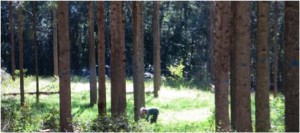Plants are growing more quickly than people can cut them down, with fields and forests on the advance across the planet. Source: The Australian
An Australian-led analysis of satellite data has found the amount of carbon sequestered in plants has risen by almost four billion tonnes since 2003, reflecting a surge in the biomass of global flora — possibly the first such increase since the Industrial Revolution.
The researchers found that natural growth in northern Australia and southern Africa had more than compensated for mass deforestation in hot spots such as the Amazon, Borneo and Sumatra.
The upsurge, reported in the journal Nature Climate Change, was driven by higher rainfall in dry savanna areas.
Tree planting in China and natural reforestation of abandoned Soviet farmland had also contributed.
The findings reflect a virtuous cycle in the warming climate, with elevated concentrations of atmospheric CO2 speeding up photosynthesis and causing more carbon to be captured by plants.
Co-lead author Albert van Dijk said a global rise in vegetation had not previously been seen in the industrial age, “but we didn’t have satellites before, so we can’t make that comparison. The important finding is that the savannas, the non-forest parts of the world, have been overlooked. They play an important role as a carbon store.”
Until now, scientists have focused on forested areas in their estimates of carbon uptake.
The new study mapped total vegetation cover by measuring natural radio waves emitted from the Earth’s surface, and analysing how much radiation had passed through water imprisoned in plant matter.
The study analysed two decades of satellite data and took almost 10 years to complete.
Professor van Dijk, of the Australian National University, said it was still unclear whether increased vegetation reflected a cyclic climate pattern, such as La Nina, or an underlying trend. And he said more carbon locked up in Australia’s savanna raised the risk of future emissions during drought.






